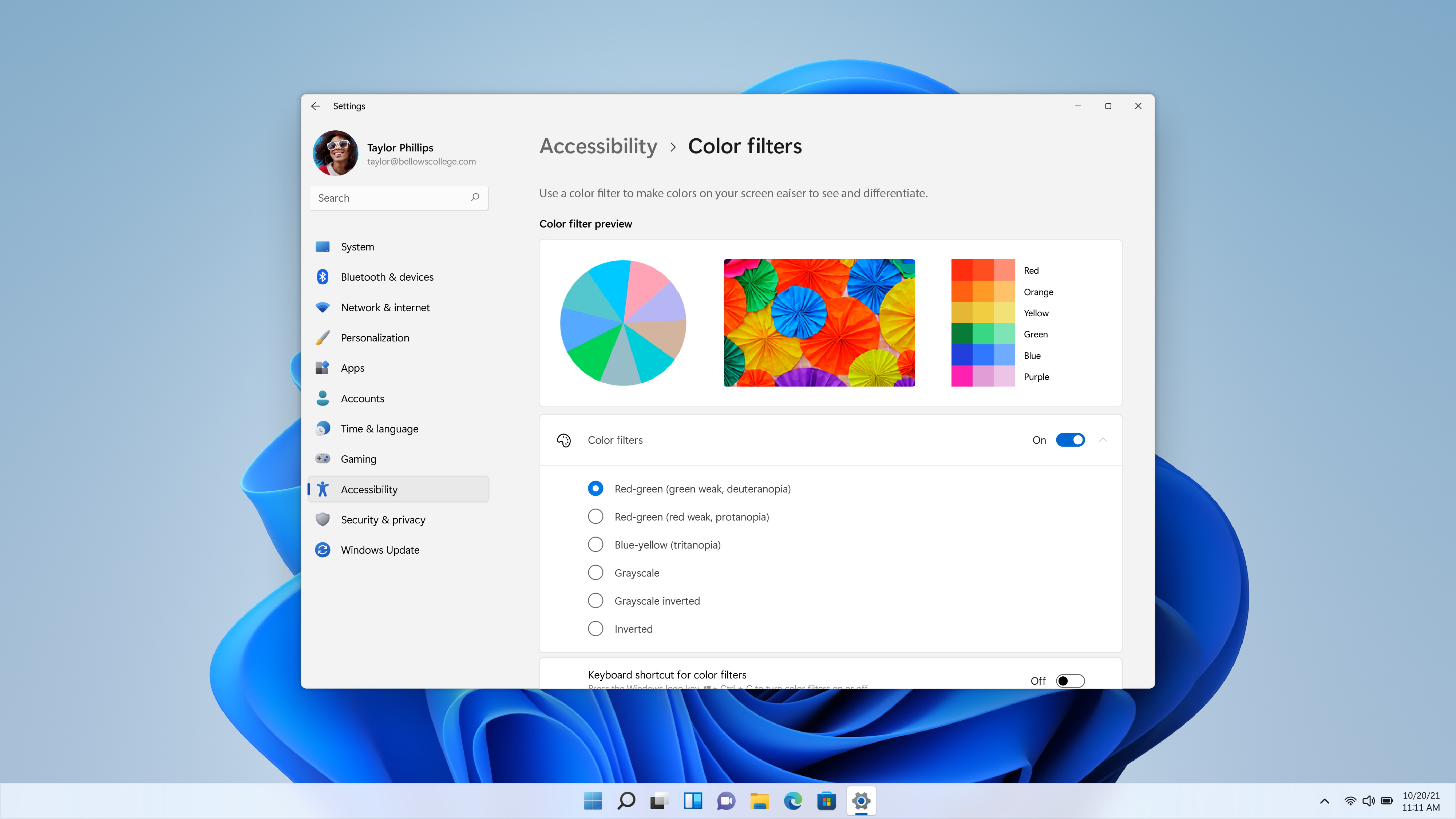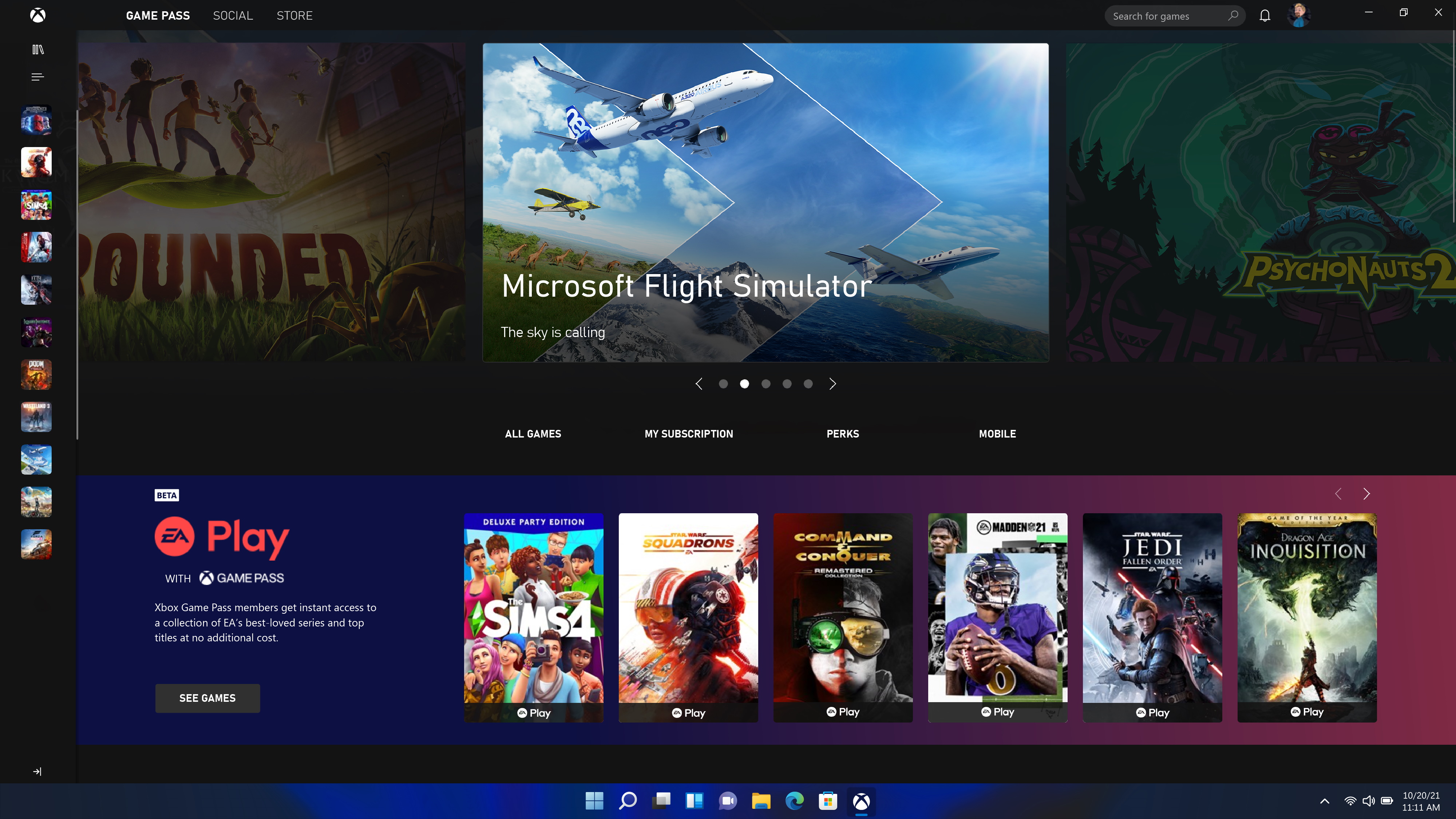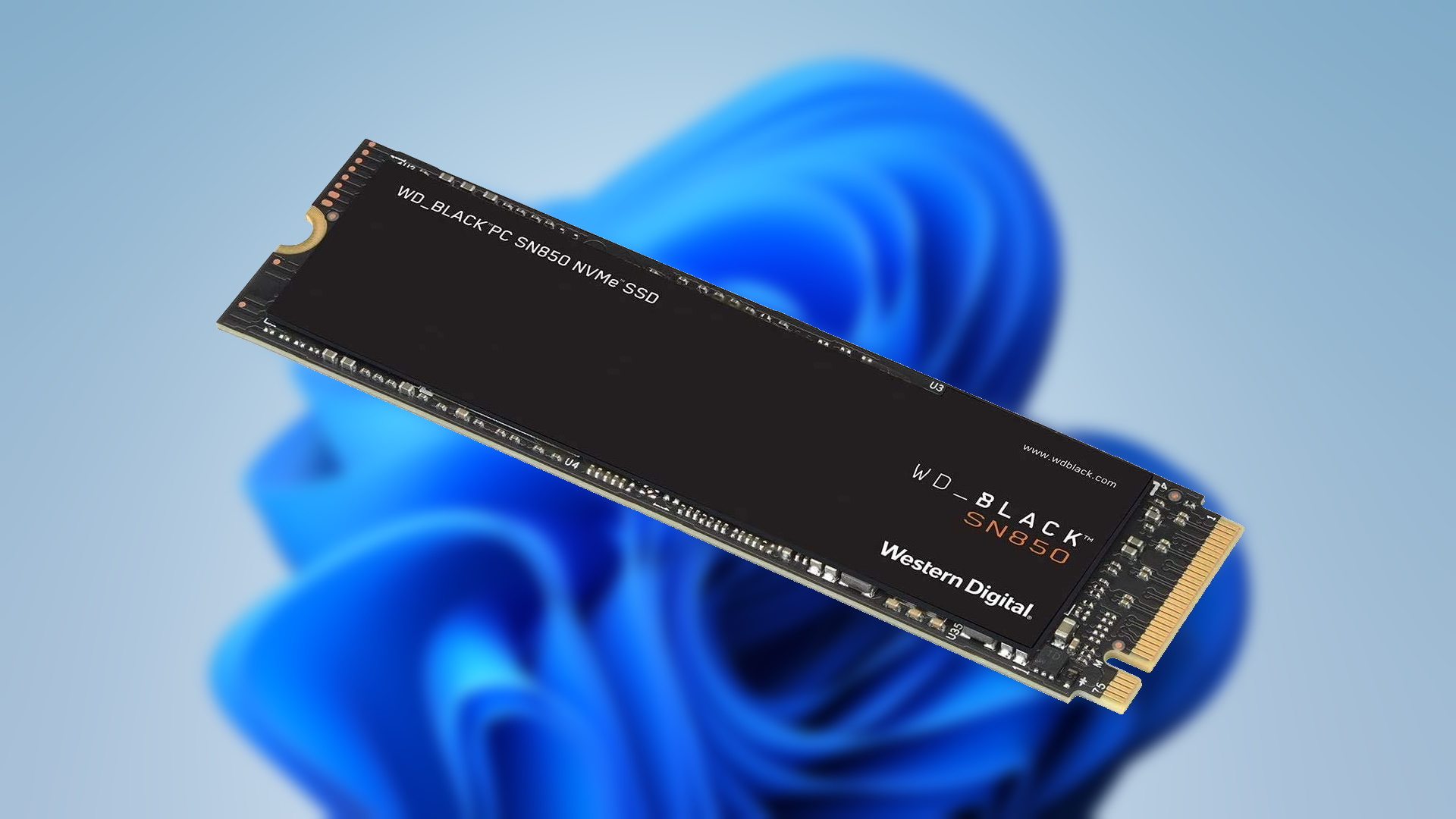Windows 11 is out now: here's what you need to know before you upgrade
Microsoft's new OS can be installed right now, but there are some things you need to know...

- Windows 11 review: We like it but you shouldn't be upgrading today
- Release date: October 5, 2021
- Price: Free upgrade for existing Windows 10 users
- How to install Windows 11
- Interface changes: New, rounded design
- Redesigned Microsoft store and support for Android Apps
- Better Xbox app integration
- AutoHDR makes old games look more vibrant
- DirectStorage will bolster SSDs on Windows 11
Windows 11 has brought a new lick of paint to Microsoft's OS. There's a brand new look for the desktop, a major UI redesign, and big changes to the core Microsoft OS apps and services that we've come to rely upon in PC gaming. Most importantly of all, though, Microsoft says Windows 11 was built for gamers.
And all of that was meant to arrive October 5, 2021. Except, frustratingly, many of the promised features and refurbished apps aren't included in the launch day build. The new Windows Store is present and correct, though we're still waiting for Android apps to make their anticipated appearance, and AutoHDR is there, but no DirectStorage, and the prettified Paint is notably absent, too.
Prior to the official announcement, however, it wasn't clear what the future of the Windows OS would be. The general expectation was that the changes to the Windows UI, codenamed Sun Valley, would simply roll at as yet another Windows 10 update. And in many respects, that's what Windows 11 is, another update to Windows 10, albeit one that Microsoft's marketing department can get behind.
Windows 11 release date
What is the Windows 11 release date?
Windows 11 was made available for new machines starting October 5, 2021 and the Windows 11 ISO download went live at the same time, so anyone can either update their existing machine without waiting for a prompt or do a fresh install themselves. Updates to existing Windows 10 users should start to roll out from now, and Microsoft hopes to have offered Windows 11 to every compatible machine by mid-2022.
Microsoft confirmed Windows 11 would begin to rollout from October 5, 2021. This expands on a blog post by Panos Panay , the Chief Product Officer of Windows, which stated "Windows 11 will be available through a free upgrade for eligible Windows 10 PCs and on new PCs beginning this holiday."
We could also see a chunky update for Windows 10 drop around the same time as well, although Microsoft will probably focus on its new OS for the main part. Windows 10 will still be getting updates until 2025, so there's plenty of life in the old dog yet.
This release date for Windows 11 is mostly for new machines, with the update for existing Windows 10 users following after. So don't be surprised if you still haven't been offered the switch, it's probably a good thing because this should mean any bugs and problems will be (mostly) sorted by the time you can upgrade.
If you can upgrade, that is, all assuming you have a TPM 2.0 compatible machine.
Keep up to date with the most important stories and the best deals, as picked by the PC Gamer team.
If you're eager to see what all the fuss is about, then you could install the Windows 11 ISO right now. That said, we wouldn't recommend installing it on your main machine, as it's still early in the release schedule and there's a good chance it won't work flawlessly.
Windows 11 new features

The new Windows UI
The most obvious changes to Windows 11 are on the user interface (UI) front. Microsoft has always had a tendency to mess with its UI, and for Windows 11, it hasn't held back. There's a new look for existing windows, and it's revisited its frosted-glass effect for some overlapping panels. The start button has moved, widgets are making a comeback, and
The general ethos is a move to a softer, more-rounded theme. Windows no longer has the right-angle corners we've become accustomed to but are rounded instead. It's a subtle change, but it's it does have a different feel—at least it does when the windows are not full screen.
The other major change is the shifting of the taskbar to the middle of the screen, as opposed to being squeezed into the bottom left-hand corner. Worry not though, you can move it back to how it works in Windows 10 with the flick of a switch on the Taskbar Settings screen.
How you arrange your windows on the screen has also enjoyed a long-overdue shot in the arm. Hovering your mouse over the maximize icon results in a drop-down palette that lets you select how you want the various windows to be arranged. You have some control over such things in Windows 10, but with easy support for windows taking up a third of the screen, or quarters, this can make for a much neater layout. This is particularly useful if you're rocking a large 4K screen and you want to view several apps at the same time.
One aesthetic change that is rumored to be coming to Windows 11 is an end to the Blue Screen of Death, or BSOD if you prefer. Don't worry though, that BSOD acronym will still be preserved (in English at least), as it's changing to the Black Screen of Death—which sounds far more metal.

Windows 11 redesigned Microsoft Store
Windows 11 features a new version of the Microsoft Store, with a new interface and a broader selection of apps. This new store is meant to have an easier to use and better-curated digital storefront. It should also be faster, "We rebuilt for speed", said Panos Panay during the Windows 11 announcement. So far our experience of it is much the same as the rest of Windows 11... it's fine. But it's also still mostly filled with apps you'd likely download direct from your browser, or wouldn't want to touch at all. But that should change with future updates.
The new-look Microsoft Store will be coming to Windows 10 as well.
One of the most surprising announcements about the Microsoft Store, other than the fact that Microsoft isn't prepared to give up on it just yet, is that you'll be able to run Android apps on your Windows PC. Microsoft has sided with Amazon to bring its particular brand of apps to the Microsoft Store, but you'll be able to sideload apk files from elsewhere. This comes courtesy of the work Intel has been doing with its Bridge Technology, but don't worry, it'll run on AMD CPUs as well.
The new store has also started to feature apps for other storefronts too, such as Epic and Amazon.
Windows 11 for gaming

Microsoft is making a bold claim with Windows 11 that it will be the "The best Windows ever for PC Gaming." Since we've all been using Windows for gaming on PCs for… well forever, I suppose that is a sign that Microsoft is taking gaming seriously—something it has tended to take for granted in the past. It claims that Windows 11 will be the fastest option for gamers, with two technologies being exclusive to the latest OS: Auto HDR and DirectStorage.
Windows 11 also sees better integration of the Xbox app into Windows.
AutoHDR gives games a boost
Auto HDR has been shown off in the Insider Preview builds of Windows 10 for a few months now, and previous to that it's a technology that Microsoft has used on the Xbox Series X/S. It doesn't work with every game, although Microsoft says that any DirectX 11 game should benefit from it.
You obviously need an HDR-compatible screen to get the most from it, but the results can make a profound difference. Not as much as the gaming being coded for HDR in the first place, but it could potentially give a new lease of life to some games that are no longer being actively developed.
Microsoft showed off the technology at the Windows 11 announcement event using Skyrim, which certainly looked a bit more vibrant, although it did lose some of its subdued charm in the process. I have a feeling that purists are going to shun this option, while anyone looking to show off their HDR screen is going to be all over it.

DirectStorage lightens the CPU load
The decision to make DirectStorage a Windows 11 exclusive was a bit controversial, as this is a technology that has long been expected to make the most of the NVMe SSDs that many of us have in our machines. Thankfully it looks like that suggestion was in error, as a recent DirectX developer preview will bring the new feature to modern Windows 10 builds too.
It's already been revealed that you won't need to have the very fastest PCIe 4.0 SSDs to gain the benefits of DirectStorage, as it will work with PCIe 3.0 SSDs, but we'll have to see how this all pans out.
The promise with DirectStorage is that it will make game loading levels and textures much quicker, potentially allowing game developers to build games in a completely different way. It will also reduce the CPU load, and could potentially deliver a bit of a performance boost. Though the impact of that could end up being rather negligible in today's gaming PCs.
Streaming environments in a more efficient way sound like a great idea, but how are games developers going to allow for the completely different types of drives gamers have in their machines? I mean some PC gamers are still running on hard drives after all.
The fact that this is going to be coming to the Xbox Series X/S could work in its favour here, and give developers an opportunity to say, look you're going to need an NVMe SSD to play this game. It's going to be a while before we start seeing games that make the most of DirectStorage, and with PCs not getting support until Windows 11 is released at the end of the year, plenty could change before the first games supporting the tech are revealed.
Windows 11 system requirements

What are the system requirements for Windows 11?
The core system requirements for Windows 11 aren't too different from what Windows 10 asks for, at least as far as the processor, RAM, and graphics card are concerned. There is currently the inclusion of a Trusted Platform Module 2.0 though, that could scupper some upgrade plans.
The full specifications are:
- Processor: 1 GHz or faster with 2 or more cores on a compatible 64-bit processor or System on a Chip (SoC)
- Memory: 4 GB RAM
- Storage: 64 GB or larger storage device
- System firmware: UEFI, Secure Boot capable
- TPM: Trusted Platform Module (TPM) version 2.0
- Graphics card: DirectX 12 compatible graphics / WDDM 2.x
- Display: >9-inch with HD Resolution (720p)
- Internet connection: Microsoft account and internet connectivity required for setup for Windows 11 Home
You'll notice from those requirements that Windows 11 is not limited to x86 CPUs, and we've already seen the Insider Preview installed on some interesting hardware. The not-so-humble-anymore Raspberry Pi 4.0 can run Windows 11, which isn't bad for a system that can be had for as little as $55. There are reports emerging of powerful smartphones also managing the feat.
The issue for some, however, lies in what constitutes a 'compatible' CPU to Microsoft. To pass this test, you'll need a relatively modern CPU, but that's not always enough. AMD Zen and older CPUs from the red team don't make the cut, neither do most Intel 7th Gen chips.
Windows 11 price
How much does Windows 11 cost?
Microsoft has announced that the new Windows 11 OS release will be available as a free update to licensed Windows 10 users. People buying PCs today will therefore be eligible for a free upgrade now that Windows 11 has launched.
Alan has been writing about PC tech since before 3D graphics cards existed, and still vividly recalls having to fight with MS-DOS just to get games to load. He fondly remembers the killer combo of a Matrox Millenium and 3dfx Voodoo, and seeing Lara Croft in 3D for the first time. He's very glad hardware has advanced as much as it has though, and is particularly happy when putting the latest M.2 NVMe SSDs, AMD processors, and laptops through their paces. He has a long-lasting Magic: The Gathering obsession but limits this to MTG Arena these days.



